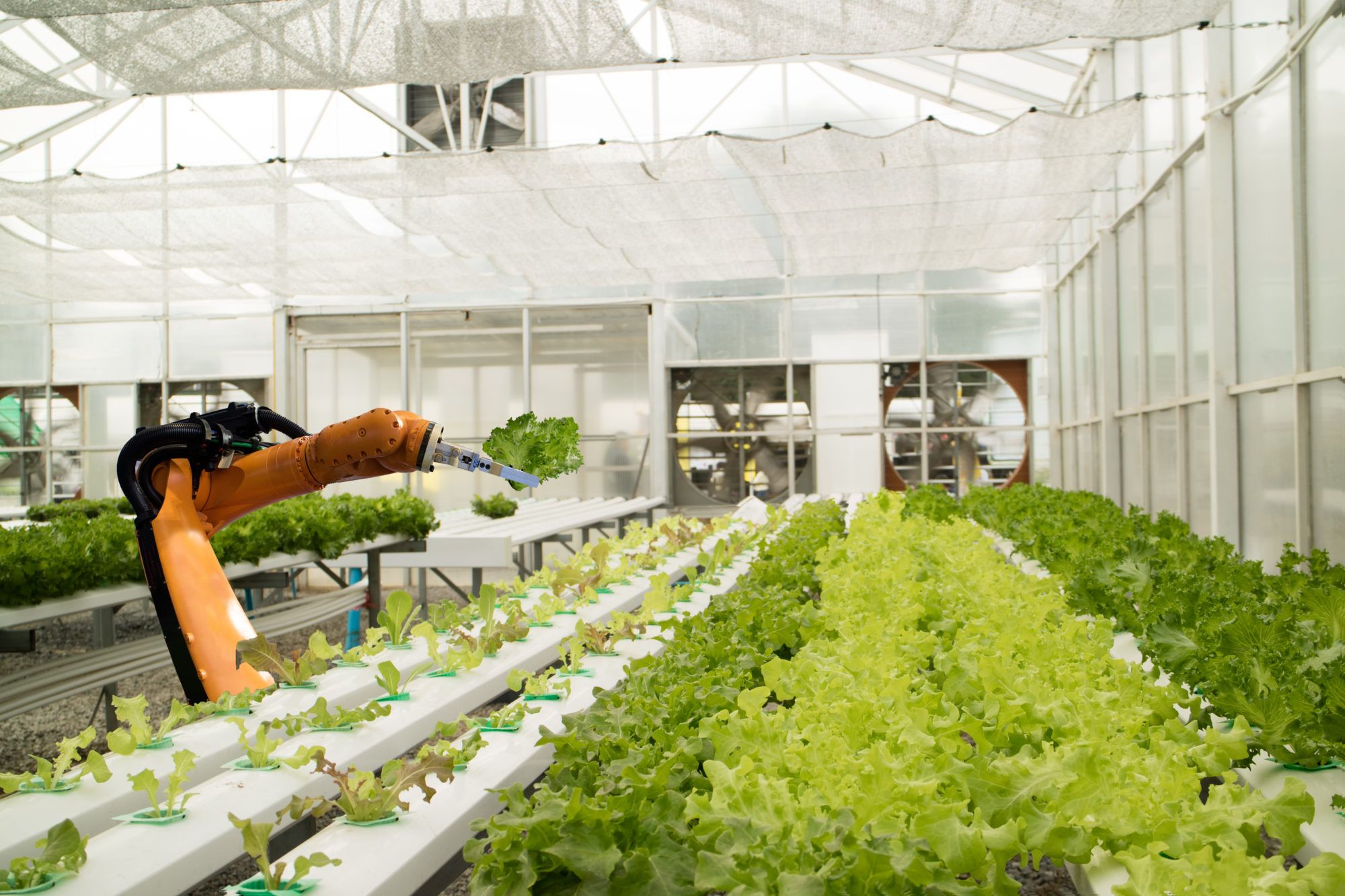Funding for farm robotics and equipment startups may have contracted by 13% in the first half of this year, according to AgFunder data, but the acquisition of “see and spray” robotics company Blue River Technologies by monolithic tractor maker John Deere in early September has brought a new energy to the space.

Dan Harburg, who joined Dutch agtech venture capital firm Anterra Capital just one month before the Blue River acquisition, is now tasked with helping Anterra engage with robotics startups. He spent the two years prior as director of business development at Soft Robotics, a Massachusetts-based startup making a robotic arm capable of grasping delicate items like fruit.
Since he has now been on both sides of the table, we caught up with Harburg to find out what he thinks is coming up in farm robotics, ahead of the International Forum on Agricultural Robots in Toulouse, France November 29 and 30 where he is a speaker.
What are some of the challenges of investing in robotics for agriculture?
Agricultural robotics startups often suffer from the same issue many other hardware companies face: they can require large amounts of investment before being able to deploy their technology with customers. In addition, many agricultural robots are designed to perform isolated tasks that do not occur with sufficient frequency to justify investment from customers. Since customer success and revenue are both important investment criteria, it can be difficult for investors to support companies before these milestones have been achieved.
Traditional robots were designed to perform very specific tasks over and over again. But the robots that will be used in food and agricultural applications will have to be much more flexible than what we’ve seen in automotive manufacturing plants in order to deal with natural variation in food products or the outdoor environment. This means ag-focused robotics startups have to design systems from the ground up, which can take time and money, and their robots have to be able to complete multiple tasks to avoid sitting on the shelf for a significant portion of the year.
Do you have a sense of how many agriculture robotics startups are out there?
We continue to evolve in our thinking of what defines an agricultural robotics company. We are interested in finding technologies that have been successfully deployed in other industries and bringing these learnings to agriculture, specifically in areas like vision processing, mobility, and logistics. So, while there are less than 100 robotics startups that claim agriculture as their primary market, we think the list could grow by adding companies that will have a large impact on our sector but may be focused elsewhere today.
What other industries do you find most relevant when looking for comparisons?
One obvious area is e-commerce. The logistics operations being automated by large retailers share many similarities to common tasks that are performed manually in the food industry today. Every online order that Amazon receives has products with unique shapes and sizes, so the robotic systems that are being developed to pack, sort, and ship these orders require inherent flexibility. These flexible robotics solutions will accelerate the deployment of automation in packaging, processing, and distribution facilities for agricultural products.
Will the high upfront costs associated with robotic technologies lead to exits on the early side in the life of startups, like Blue River Technologies?
Many of the large agricultural technology companies recognize that robotics and artificial intelligence will become ubiquitous across different types of equipment in the future. That is driving them to rethink the processes by which they bring new products to market and the composition of the software and hardware teams. John Deere clearly understood this trend and was an early mover in bringing on a very talented team with a proven product. I wouldn’t be surprised if others follow suit.
What do you think other acquisitions could look like in this field? Are there kinds of exits that look very different from this case that you’re thinking about when looking at companies?
If you look at exits for robotics companies beyond agriculture, you see that some technology solution providers have been acquirers of robotics startups, but you also see end customers bringing technologies and teams in-house to maintain an advantage over their competitors. Amazon’s acquisition of Kiva Systems provides a good example of that trend, as this technology has streamlined the way Amazon designs new distribution centers and runs their operations. We’re interested to see whether agricultural end-users will also become acquirers of robotics technologies as they look to gain an edge on their competition.
What have you learned in your first few months at Anterra that you didn’t know when you were on the startup side?
As an entrepreneur, I was often told how important it is to work with investors who bring value beyond their dollars, but I found that many entrepreneurs interpreted that to simply mean taking money from strategic partners. It’s been eye-opening for me to watch Anterra work alongside its startups by using its network and its food and agriculture corporate partners to help startups gain customers and find acquirers. I wouldn’t want to be an entrepreneur again without that type of access.




